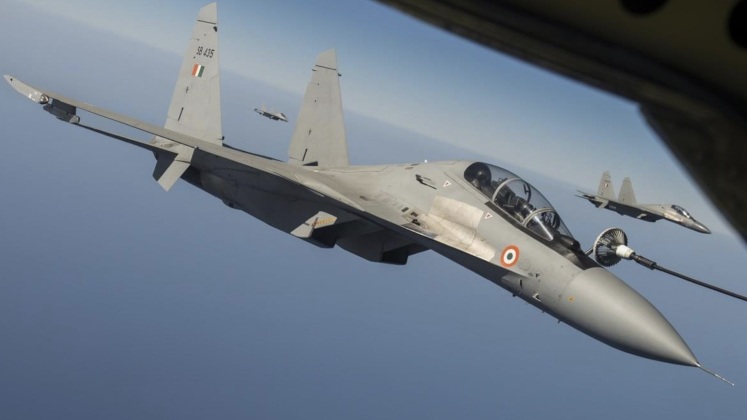The Indian Air Force has tested a new enhanced variant of the BrahMos cruise missile, which was launched from a Su-30MKI heavyweight fighter in the Bay of Bengal and had an extended 450km range. The new missile improves on the 290km range for prior air launched variants, with development occurring as more Su-30 units are equipped with the BrahMos. The missile was developed based on the Russian P-800 Oniks deployed from Russian Navy warships and Bastion coastal defence systems, and was previously deployed but the Indian Army and Navy before an air launched variant completed development. The BrahMos was jointly developed by India and Russia, which allowed them to avoid arms control restrictions in place on the export of missiles which would have otherwise prevented India from purchasing missiles with ranges exceeding 300km. At the time of its first entry into service the BrahMos was considered the world’s most capable anti ship cruise missile, with anti surface variants also in service, and combined with the long range of the Su-30MKI it provides the Indian Air Force with a strike capability which very few fighter units in the world can match.

With over 260 airframes in service split between 11 squadrons, and several more on order, the Su-30MKI forms the backbone of the Indian Air Force’s combat fleet with the country being by far the largest Su-30 operator in the world. Since its entry into service in 2002, when it was widely considered the most capable fighter in the world and by a significant margin, the aircraft’s roles have expanded significantly as its avionics have been upgraded and the range of weapons it can deploy have expanded. One of the most notable roles for the fighter since 2017 has been that of a strike platform delivering cruise missile strikes.
An official commented regarding the test of a new BrahMos variant to equip Su-30 units: “This is the first time the new BrahMos missile with a strike range of over 450 km (original range 290 km) has been tested from the air. The Sukhoi, with a combat radius of almost 1,500-km without mid-air refueling, combined with the 450-km range BrahMos missile is a formidable weapons package. The lethal Sukhoi-BrahMos combination gives the IAF strategic reach and punch against land or sea targets over very long ranges.” The extended engagement range of the fighters not only allows them to cover far larger areas, whether penetrating Pakistani or Chinese airspace or patrolling the Indian Ocean, but perhaps more importantly allows them to launch strikes from safer distances where enemy air defences and fighter units will struggle to counter them.

Variants of the BrahMos with further extended ranges are currently thought to be under development, with the missile’s very high speed making it more difficult to intercept and providing more kinetic energy upon impact but also increasing air resistance and making longer ranges more difficult to achieve. It remains uncertain how many Su-30MKI units India will field, with the latest orders for new airframes having been placed in 2020, but there remains a considerable possibility that a successor to the aircraft will also be equipped with BrahMos variants. The Indian Air Force has continued to show an interest in the Russian Su-57 fighter as a successor to the Su-30, and while efforts to jointly develop an Indian derivative and give India joint ownership of the constituent technologies have been abandoned, ‘off the shelf’ prophases from Russia or license production in India as was done with the Su-30 are both considered significant possibilities. The Su-57’s ability to carry high diameter missiles internally, combined with a much greater range than the Su-30, stealth capabilities, and use of six AESA radars rather than a single PESA radar, are among the features which could make it an ideal launch platform for future BrahMos variants.
